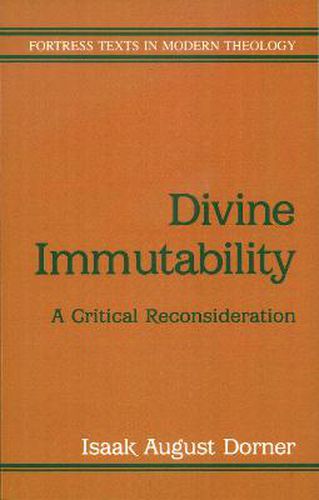Readings Newsletter
Become a Readings Member to make your shopping experience even easier.
Sign in or sign up for free!
You’re not far away from qualifying for FREE standard shipping within Australia
You’ve qualified for FREE standard shipping within Australia
The cart is loading…






Occasioned by the nineteenth-century kenotic christological controversy, Isaak Dorner’s essaywhich is here completely translated into English for the first timeremains one of the most extensive historical, philosophical, and theological treatments of immutability to date. Dorner was initially attracted to kenoticismthat the incarnation as a divine self-divestment implies that God undergoes changebut rejects it in Part One.
Part Two is a historical survey of the classical doctrine from the patristic period to Schleiermacher which shows the longstanding connection between divine immutability, God’s goodness, and soteriology. Dorner concluded that this formulation was not mistaken, but extreme and one-sided, making positive relations between God, time, and history implausible.
Part Three offers Dorner’s reconstruction.
$9.00 standard shipping within Australia
FREE standard shipping within Australia for orders over $100.00
Express & International shipping calculated at checkout
Occasioned by the nineteenth-century kenotic christological controversy, Isaak Dorner’s essaywhich is here completely translated into English for the first timeremains one of the most extensive historical, philosophical, and theological treatments of immutability to date. Dorner was initially attracted to kenoticismthat the incarnation as a divine self-divestment implies that God undergoes changebut rejects it in Part One.
Part Two is a historical survey of the classical doctrine from the patristic period to Schleiermacher which shows the longstanding connection between divine immutability, God’s goodness, and soteriology. Dorner concluded that this formulation was not mistaken, but extreme and one-sided, making positive relations between God, time, and history implausible.
Part Three offers Dorner’s reconstruction.